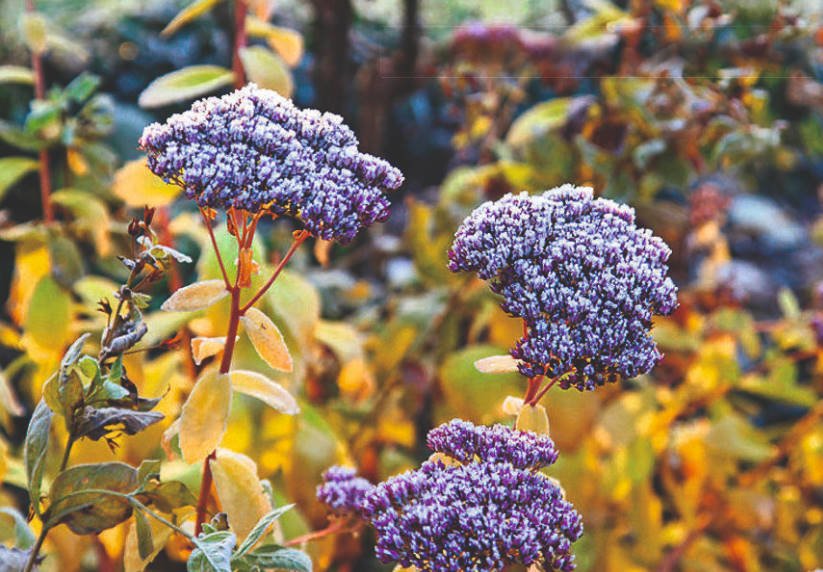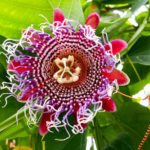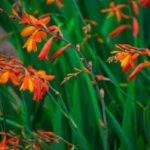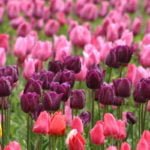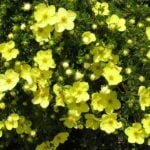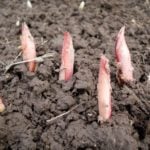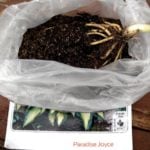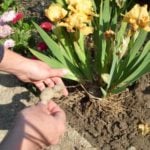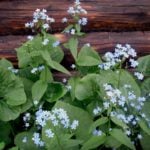Winter has covered the plants with snow, creating a pure white background, which is incredibly impressive look graphically dry perennials. When the color fades, the shape is doubly important. This pattern should be remembered by those who live in a country house year-round. While the flower beds finally fill up with snow “head”, they will be beautiful, despite the fact that winter in the yard. Provided that the plants in them will be correct. Requirements for the selection of” inhabitants “of flower beds and mixborders are simple:” exterior ” shape of the nozzles and strong vertical stems that do not overshadow the onslaught of the first snowfall. We present a dozen “persistent soldiers”: admire them in the winter!
1. Reed grass
This ornamental grasses has two varieties suitable for winter flower beds: Calamagrostis acutiflora ‘Karl Foerster’ and Calamagrostis short-haired.
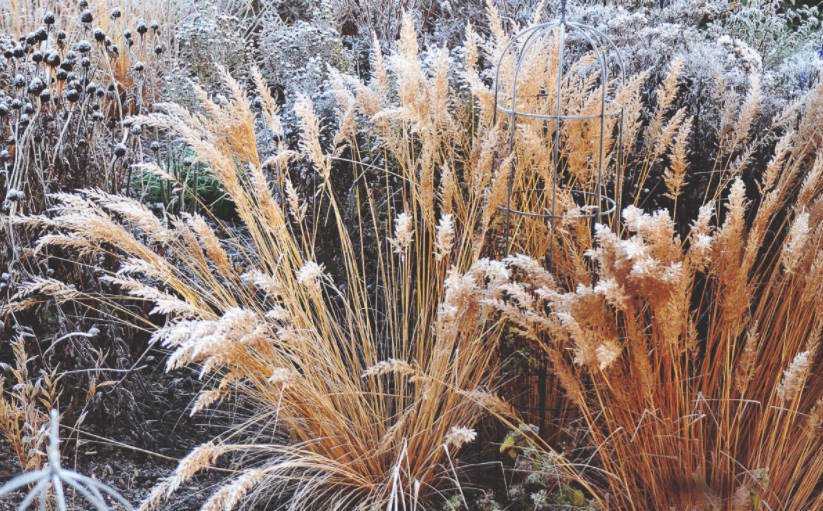
Reed grass
The first will hold out longer, and will stand at attention ” strictly vertically. But the second-brighter and with more fluffy panicles.
2. Hylotelephium
You need not falling apart varieties with purple, green, blue, variegate foliage and white, pink and purple flowers. Dry out, the stems will provide a raised profile, and the inflorescence-the flaps will turn into a “platform” for collecting snow — an impressive sight! Especially attractive varieties are ‘Carl’, ‘Matrona’,’ Brilliant‘,’ Iceberg‘,’ Stardust‘, ’Karfunkelstein‘, ‘ Mr. Goodbud’.
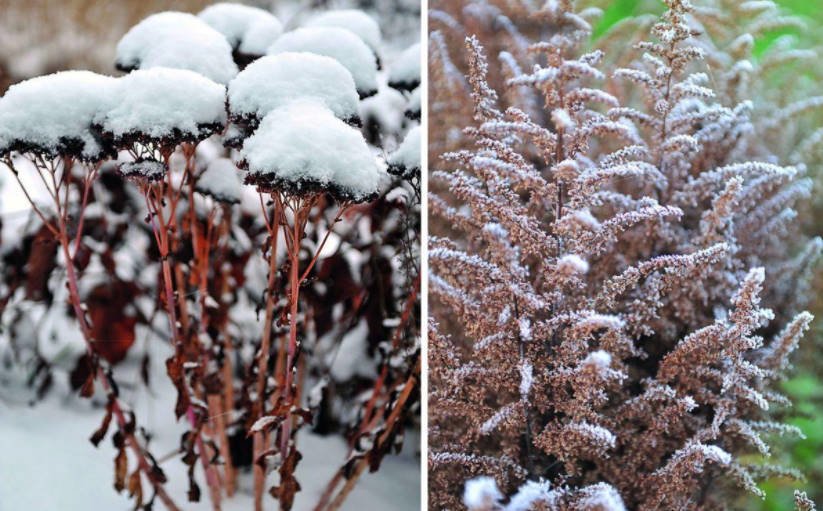
Left: Hylotelephium. Right: astilbe.
3. Astilbe
Species and varieties of this slender beauty a great many, and they are all — the owners of picturesque, proudly towering “panicles”. You can play with shades and shape, combining in the winter flower garden astilby with empathy darker and lighter, tighter and more delicate. It is important to choose varieties with direct peduncles — those that incline to the ground, immediately find themselves under the snow.
4. Phlomis
You can plant any of three species: tuber Jerusalem sage with purple flowers, Jerusalem sage Russell with yellow or Jerusalem sage Samia with dusty grey: dry out, they will look the same as the shells, strung on a skewer. And when you grab frost or covered with snow, the effect is simply magical.
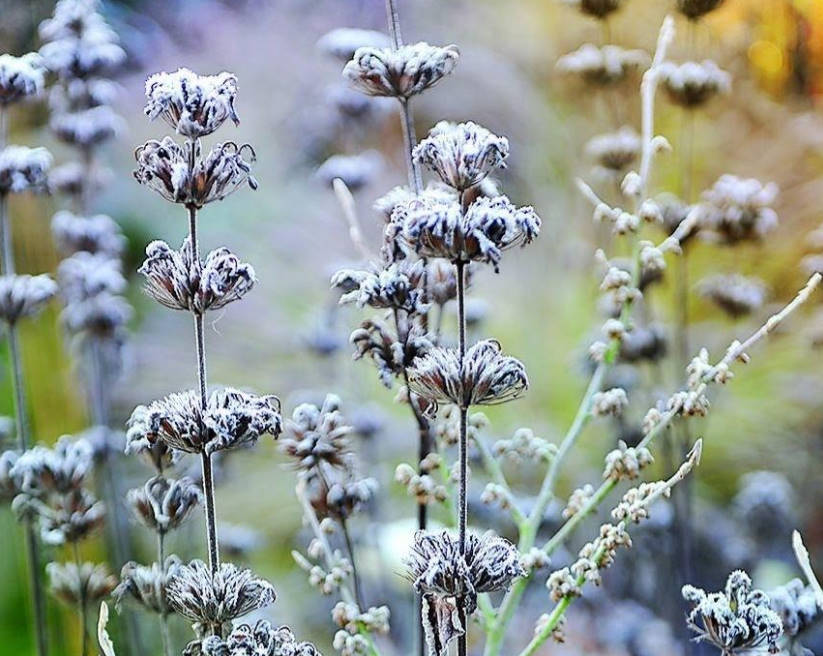
The Jerusalem sage
5. Liatris spicate
Liatris, when it flowers, similar to a hard brush to clean bottles: white or purple, depending on variety. Fall foliage liatris is painted in bright yellow and red tones, and the winter Browns, as does the spike.
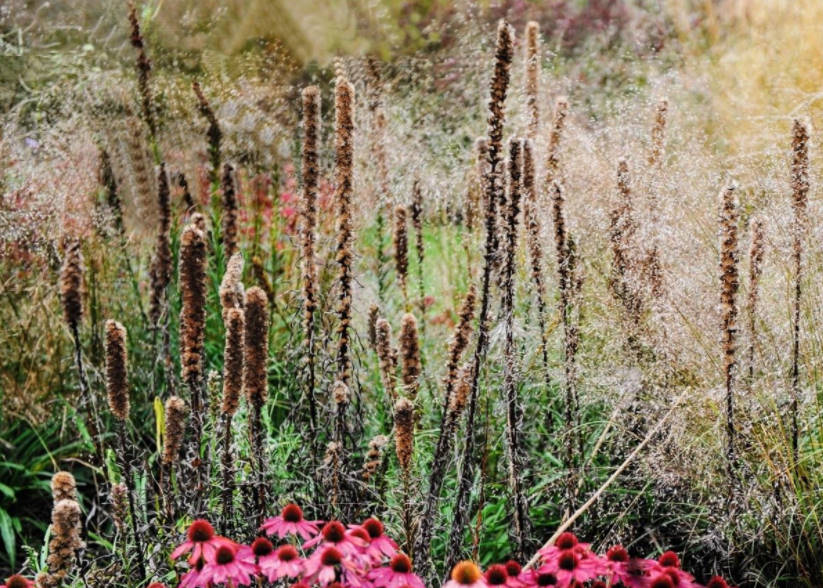
Liatris: these plants with a romantic name, reminiscent of a woman’s name, look like bottle brushes.
And although in comparison with the summer plant looks not so advantageous, it is nevertheless expressive and perfectly holds a vertical shape.
6. Echinacea purpurea
The most common species Echinacea is reliable and unbending stems, and also a lovely seed heads-the big guns that adorn the snow-covered garden, until they will peck birds.
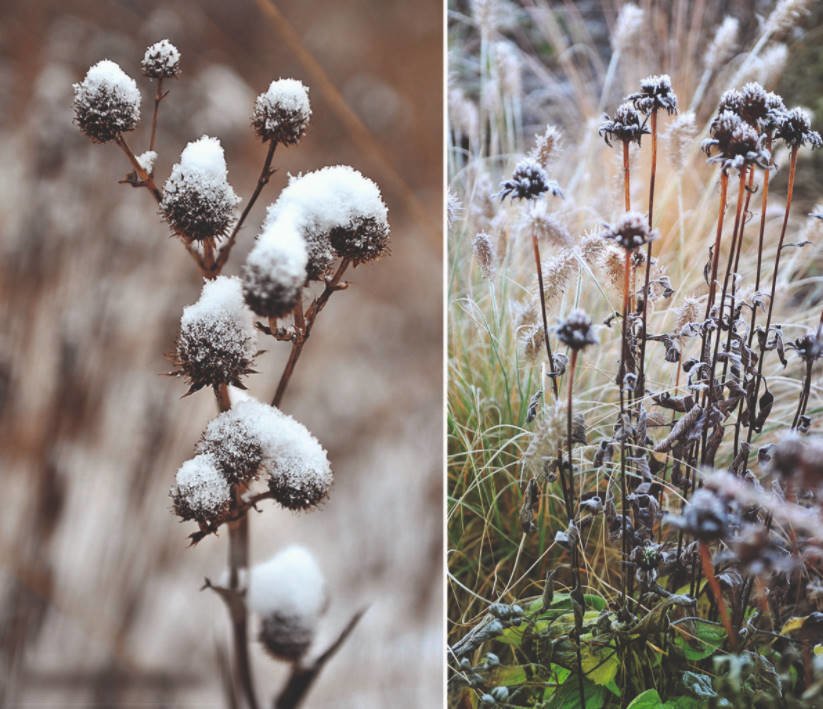
Eryngium (left) and gentleman (right)
Varieties will also be an excellent decoration of winter flower beds, but many are not as durable as a species plant.
7. Eryngium
All hardy perennial species of eryngium, and of course, the annual eryngium giant thanks to the beauty of the dried inflorescences are used as dried flowers in winter bouquets. Why not use them in winter flower beds?
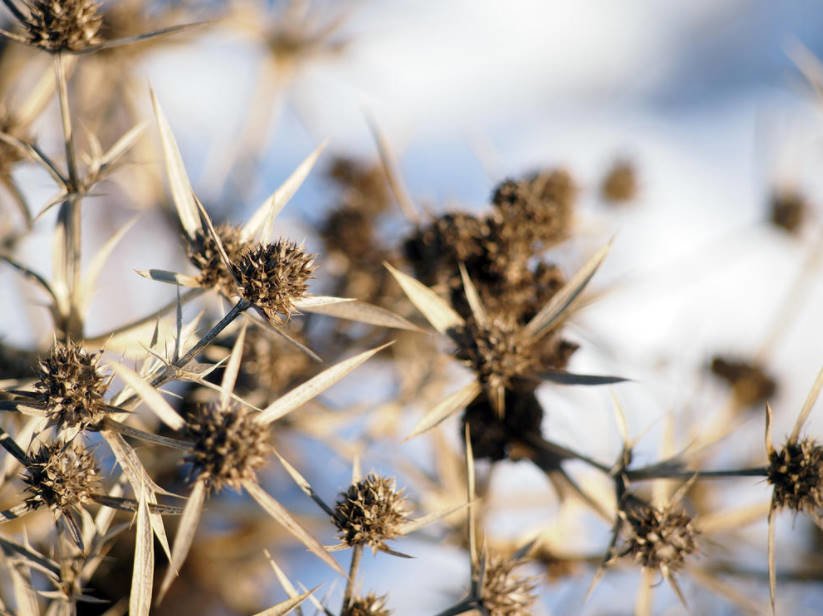
Eryngium
8. Miscanthus Chinese
This decorative grain, topped with elegant fluffy inflorescences, standing firmly on strong stems, is absolutely not aggressive: you can not fear that it will “score” neighbors in the flower garden.
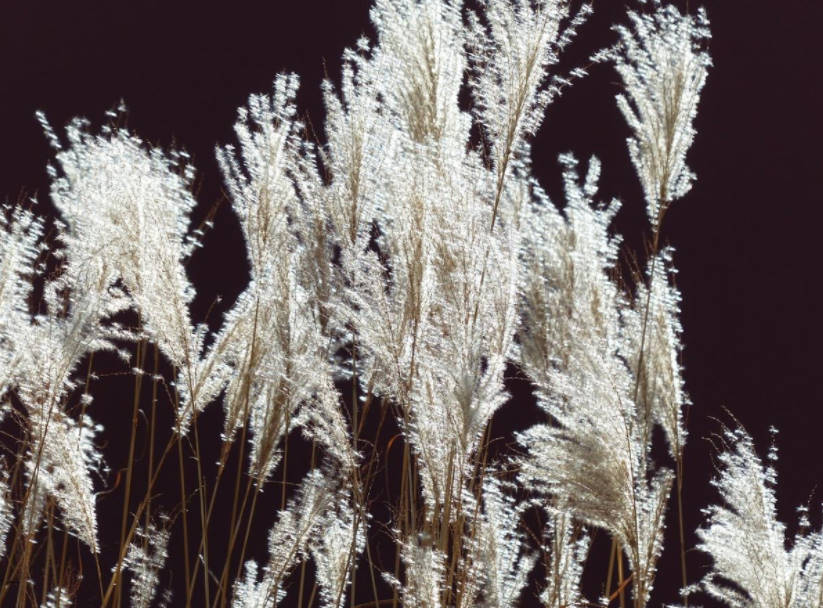
Miscanthus Chinese
Choose reliably wintering and have time to bloom in the middle lane varieties: ‘Autumn Light’, ‘Flamingo’, ‘Grosse Fontaene’, ‘Malepartus’, ‘Silberfeder’, ‘Silberspinne’.
9. Penstemon digitalis
Penstemon digitalis ‘Husker Red’ from spring to autumn blooms garden purple foliage. In summer it contrasts inflorescences of pinkish-white tubular flowers. “Zest” snow-covered flower beds-blue-black drops of fruit on reddened peduncles, which appear in the early winter.
10. Deschampsia cespitosa
Decorative grasses having, perhaps, the most delicate inflorescences among “relatives”. As often happens, the appearance is deceptive, and a fragile, elegant-looking plant is able to endure different adversities.
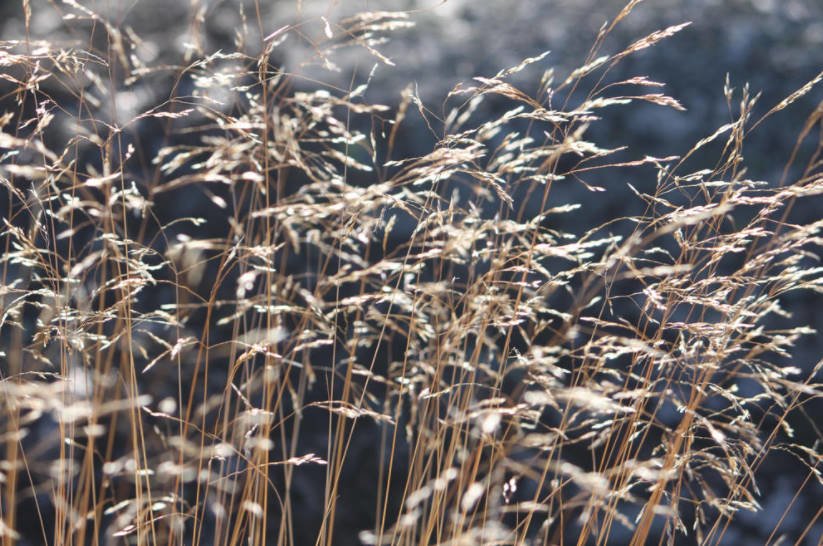
Deschampsia cespitosa
That straw lace snowfall, surprisingly, uneasy, until it completely disappears under the snow.
Winter flower garden decorators
If the fall does not cut the flower plants, in the winter you can admire the magical paintings created by dried inflorescences and leaves covered with frost and snow.
By the way, to leave the aerial part of the fallen “Pets” is and for purely practical reasons: the old shoots and leaves protect the kidneys from low temperatures renewal at the base of herbaceous perennials. In the winter garden look great with any ornamental grass and flower perennials, but some species of flora are able to paint a bright black-and-white landscape: for example, leaves of bergenia, Euphorbia, and geranium of some varieties under the influence of cold red.
Important: not all plants should be left in the flower garden. Autumn pruning helps some short-lived herbaceous perennials survive the winter. And, of course, be sure to remove the sick inhabitants of the flower beds.
